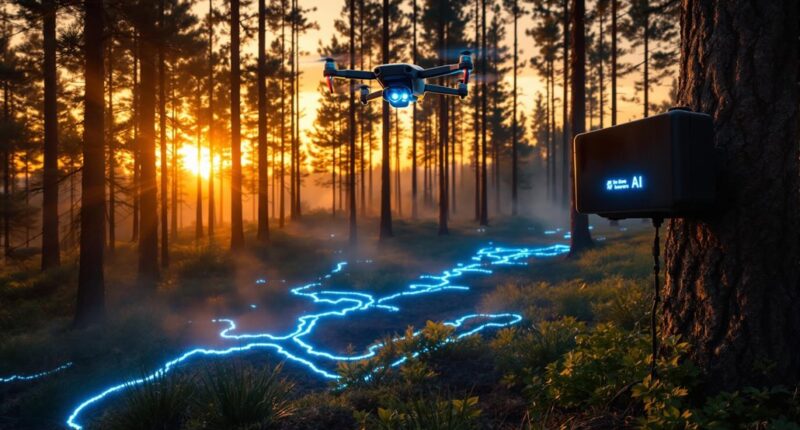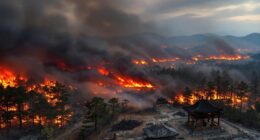Innovative wildfire prevention efforts are receiving $50,000 grants to combine AI, drones, and fungi. AI systems with 1,144 cameras monitor fire-prone areas, detecting smoke and flames early. Drones provide real-time video feeds and can drop fire retardants in difficult terrain. Meanwhile, scientists are introducing fungi to break down flammable vegetation naturally. Early results show fires are being contained in hours instead of days. These unconventional partnerships may reshape how we combat wildfires in the future.
As wildfires continue to threaten communities across the globe, scientists and technologists are developing innovative solutions to combat these devastating disasters. Three unlikely allies have emerged in this battle: artificial intelligence, drone technology, and fungi. Thanks to new $50,000 grants, these unconventional approaches are gaining momentum in wildfire prevention and management efforts.
The ALERTCalifornia system represents a major breakthrough in early fire detection. This network uses 1,144 cameras positioned throughout fire-prone regions, coupled with artificial intelligence that continuously monitors for signs of smoke or flames. The system proved its worth during the Black Star Canyon fire, when it detected the blaze in its early stages, allowing firefighters to contain it before it spread to nearby neighborhoods.
Early detection transforms wildfire response—AI camera networks now catch blazes before they threaten communities.
AI doesn’t just detect active fires – it can predict them before they start. Advanced algorithms now analyze multiple factors including vegetation density, soil moisture levels, and weather forecasts to identify potential fire hotspots with remarkable accuracy. These predictive models correctly identify dangerous conditions up to 90% of the time, giving fire management teams critical information for preventative measures.
The integration of AI with drone technology has created a powerful combination for wildfire management. When Dryad’s Silvaguard system detects a potential fire, it can automatically deploy drones to the area. Recently, utilities have found this technology essential as wildfires increasing pose greater threats to critical infrastructure. These unmanned aircraft provide real-time video feeds to firefighters, helping them understand the fire’s behavior and spread without putting personnel at risk. Developed by researchers from the University of Sheffield and Bristol, these swarm drones can also drop fire retardant in precise locations that would be difficult for ground crews to reach.
Perhaps most surprising is the role of fungi in wildfire prevention strategies. Certain mushroom species naturally process dead vegetation, breaking down potential fuel before it can feed wildfires. Scientists are developing ways to introduce these fungi into high-risk forest areas as a natural method of reducing flammable material.
The $50,000 grants are funding field tests of these technologies in California’s most fire-prone regions. Early results show promising outcomes, with AI-monitored areas experiencing faster response times and smaller average burn areas compared to traditionally monitored regions.
Fire chiefs from several counties have expressed enthusiasm about these new approaches. “We’re seeing fires contained in hours instead of days,” said one fire department spokesperson. “These technologies aren’t replacing our firefighters – they’re making their jobs safer and more effective.”
As climate change continues to increase wildfire risks worldwide, these innovative approaches offer hope that technology and nature working together might provide new ways to protect communities. The combination of advanced AI, drone capabilities, and natural fungal processes represents a holistic approach to a growing global challenge.
Conclusion
As California faces increasingly dangerous wildfires, these innovative $50,000 grants are powering unexpected solutions. Researchers are now using AI to predict fire paths, drones to monitor remote areas, and even fungi to help forests recover. These technologies don’t replace firefighters but give them powerful new tools. With climate change making fires worse, these creative approaches might help protect communities and wilderness in the challenging years ahead.







